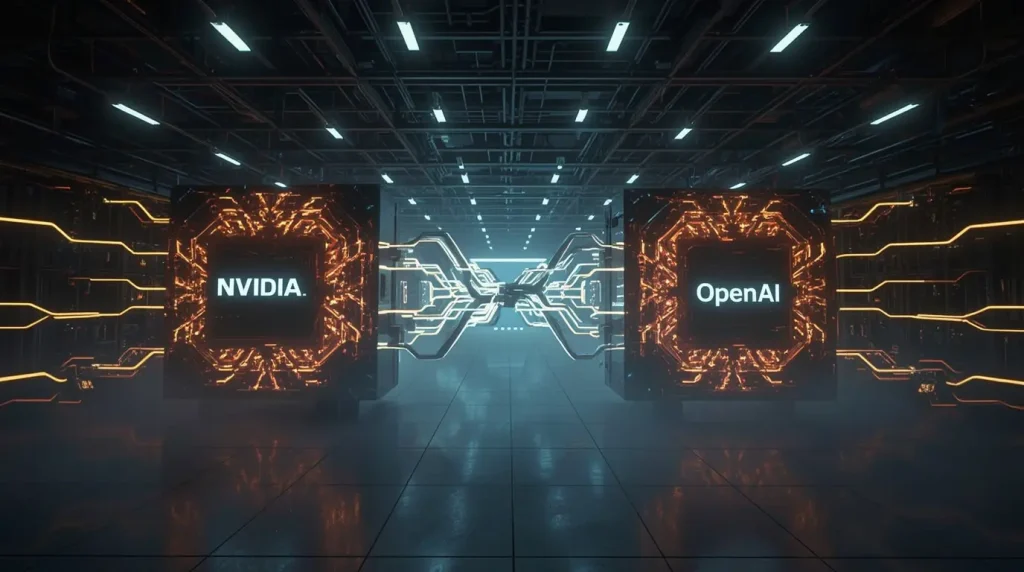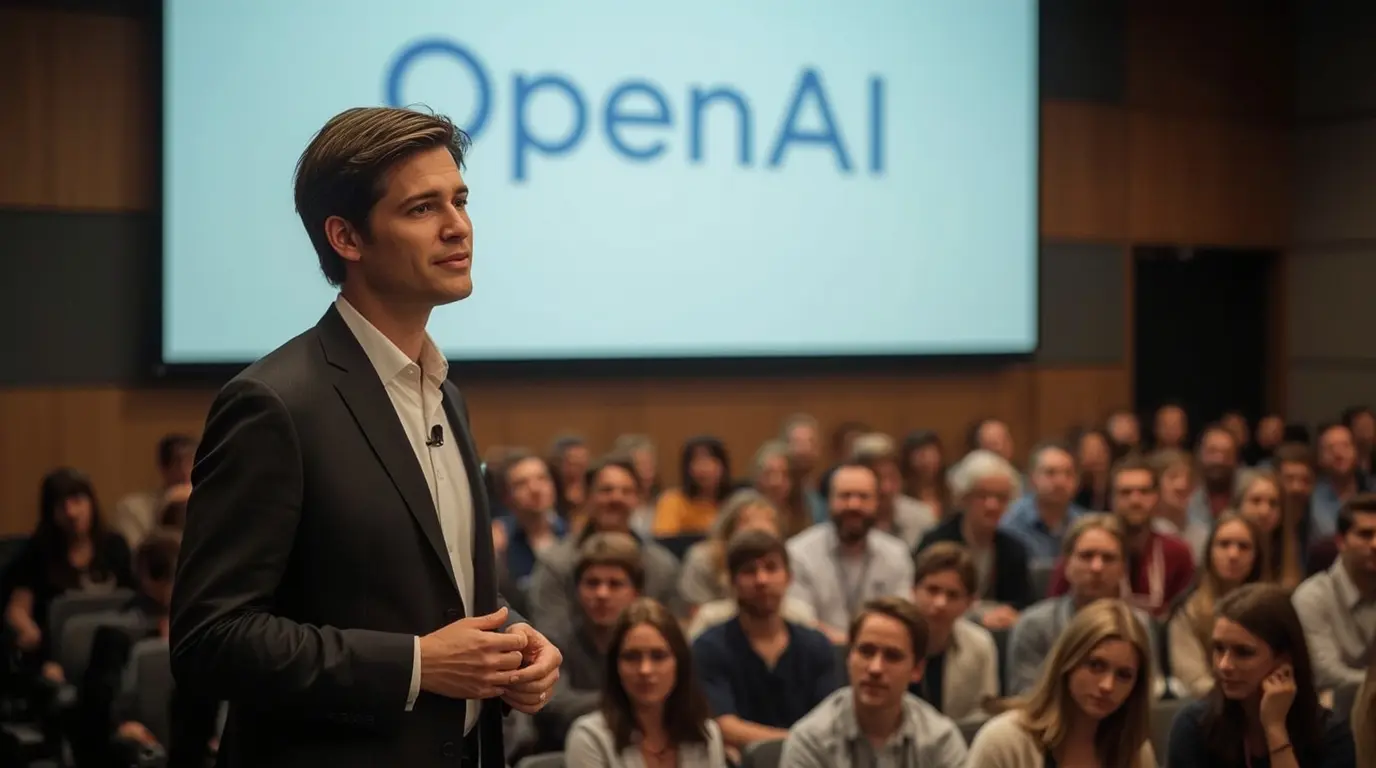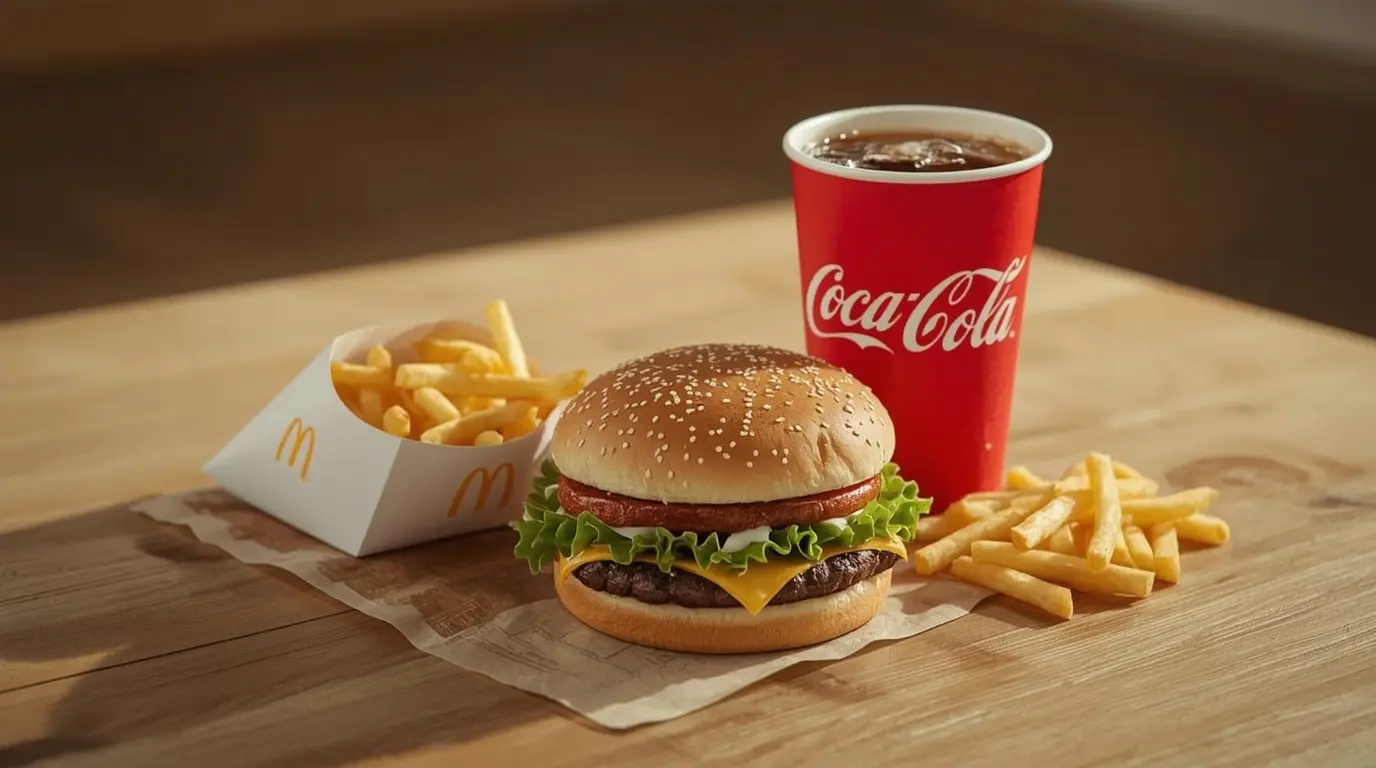Introduction
This week, a massive new shift shook the artificial intelligence world as OpenAI and NVIDIA formed a groundbreaking strategic alliance. NVIDIA will pump up to $100 billion into OpenAI to guarantee the rollout of at least 10 gigawatts of AI data center power. This step highlights the enormous money needed to create the next wave of AI. The project revolves around NVIDIA’s next-gen Vera Rubin platform, marking the deal as more than just cash moving around—it’s a promise to fuel the AI calculations of tomorrow.
The partnership’s goal is to supply the extreme computing power OpenAI will need to design and operate its next models, a goal achievable only through the strong ties built during the AI boom. OpenAI now locks in the funding and hardware it needs to push its game-changing research, while NVIDIA locks in its role as the AI world’s go-to skeleton, keeping its leading GPUs in high demand for years. This agreement is a vital win for OpenAI, offering a dependable route to beating the industry’s largest hurdle: the lack of advanced computing juice.
The Deal Breakdown: $100 Billion for 10 Gigawatts
The freshly released letter of intent reveals a gigantic plan: a $100 billion deal for just under 10 gigawatts of AI compute power. Here’s how it works. OpenAI will build a series of data centers—think city-size facilities—each totaling at least 10 gigawatts of generating capacity. The deal locks in power coming 100% from NVIDIA’s tech stack. For everyday context, that’s enough juice for 8 million households running flat-out.
Inside these centers, millions of NVIDIA graphics chips, or GPUs, will stack vertically in super-cooled racks. Why NVIDIA chips? Because they’re designed to handle training those massive AI models, then turning them around fast enough for real-time services around the globe. The racks, cooled pipes, and power-processing units will perform a coordinated ballet of electricity, data, and AI workloads, all sourced from NVIDIA.
The financial backing behind NVIDIA’s partnership with OpenAI is extraordinary. The chipmaker is prepared to channel as much as $100 billion into OpenAI, with payments coming in small chunks each time a new gigawatt of cloud-level computing goes live. The first piece of this gargantuan puzzle is expected to be operational in late 2026, built atop NVIDIA’s forthcoming Vera Rubin AI stack.
This stepwise strategy guarantees that every dollar is matched to concrete facility goals. Alongside this, NVIDIA earns the title of “preferred strategic compute and networking partner,” a label that locks the two firms into joint planning. Together, they will engineer the next set of processors, switches, and AI libraries, ensuring NVIDIA’s technology stays in sync with the growing demands of OpenAI’s models. The goal is to squeeze every drop of speed and cost-efficiency from the future AI cages they jointly build.

Key Details of the Partnership
| Feature | Detail | Significance |
|---|---|---|
| Total Investment | Up to $100 billion from NVIDIA | One of the largest corporate investments in history. |
| Compute Target | At least 10 gigawatts of AI data-center capacity | Power equivalent to 8 million homes, enabling unprecedented AI scale. |
Initial Deployment: 2026, Second Half │ Just 18 to 24 months lie between now and the rollout’s first stage.
Technology Platform: NVIDIA Vera Rubin │ Runs on the latest NVIDIA enterprise-grade AI architecture.
Partnership Status: Currently a signed letter of intent │ Minor wording remains to be polished before a full, binding deal.
Forged in Silicon: A Brief Historical Context
What might look like a sudden announcement between OpenAI and NVIDIA is in fact the natural sequel to a decade-long collaboration. Jensen Huang, NVIDIA’s CEO, sums it up: “We’ve been pushing each other since the first DGX to the moment ChatGPT rewrote the conversation.” Back in the first years of OpenAI, NVIDIA’s DGX supercomputers were the quiet, powerhouse backbone enabling the lab’s loftiest experiments and innovations. The partnership that began with a shared vision has steadily hardened like silicon to silicon.
This ongoing collaboration has been hugely successful. OpenAI has tapped into NVIDIA’s technology to build AI systems like ChatGPT, now serving over 700 million active users every week. Greg Brockman, OpenAI’s co-founder and President, put it simply: “We’ve utilized their platform to create AI systems that hundreds of millions of people use every day.” The latest agreement reflects a move away from a basic buyer-supplier setup to a tightly-knit long-term alliance. Both firms believe that the journey to more capable AI—and, eventually, artificial general intelligence (AGI)—will always hinge on access to massive, ever-expanding computing power. For OpenAI, the deal locks in essential resources needed to support AI research and rollout over the next decade.
Strategic Implications: Why This Deal Matters
What happens in this partnership doesn’t just stay within the walls of OpenAI or NVIDIA. The deal has the potential to reshape the entire AI industry, sending ripples of change far beyond the two firms involved.
Securing OpenAI’s Future
For OpenAI, this deal addresses a pressing problem: spending money faster than anyone can remember. Analysts warning that the firm’s cash burn could peak at an eye-watering $115 billion through 2029 paint a stark picture. The $100 billion gift from NVIDIA indeed fills the bucket, but the bucket has hidden holes. To fully build the green-lit AI center, sources say OpenAI still needs about $40 billion more in gigawatt financial juice. The numbers illustrate not just a hair-raising cash race but the enormous gap the firm has to close. OpenAI’s already sky-high revenue of $13 billion and rising still needs to soar at a higher slope to match even NVIDIA’s charity.
Cementing NVIDIA’s Dominance
For NVIDIA, this move is a strategic chess move that borders on bravado. By “benevolently” handing the money to its customers, the chip maker grabs a guaranteed future order book, its most prized offering: the premium AI GPUs that now seem to have no ceiling in value. Analysts worry this circular cash circle could fake demand, yet the strength it gives to product pricing, and the moat it digs against would-be chipmaker customers, suggests market을 see it differently. One industry voice summed it neatly: this partnership “could become the biggest profit engine in AI history” yet.
The “Too Big to Fail” Dynamic: The latest deal has turned the fortunes of several tech titans into a closely knit tapestry, prompting experts to label this a “far grander, messier version” of the old “too big to fail” idea. OpenAI is now saddled with huge, multi-year financial commitments to NVIDIA, Oracle, and Microsoft. Economists point out that the AI sector has become so crucial that, without its surge in spending, the U.S. economy would appear on the edge of recession. The risk is that OpenAI’s fortunes, once largely its own, now carry considerable weight in nearly every economic forecast. If demand for its products crosses anticipated peaks, the entire ecosystem could wobble.
Analyst Perspectives and Market Reactions
The multi-billion deal has ignited intense discussion in analyst circles and trading floors. Bulls call it a watershed investment that powers the next vast swell of AI capability, while bears see the hallmarks of a speculative rush all over again. Market volatility spiked, with AI-linked stocks swinging dramatically the next day. Investors appear to be asking, “Is this the dawn of a new, unstoppable era, or another tech mirage?”
The Bull Case: Fans of the agreement say it makes perfect sense for both firms. NVIDIA gets to spend some of its giant cash pile to lock in stable growth and strengthen its technology platform. OpenAI, meanwhile, needs powerful computer muscle to keep its rivals at bay. A recent article by The Motley Fool calls the partnership a potential “powerhouse for profits in AI history,” which would crown NVIDIA’s technology dominion. Experts view the pact as proof that the AI story is real and here to stay, with the top names in the field bracing for a future where running smarts demands a lot more electricity and silicon.
The Bear Case: Critics argue the financing looks “circular.” Stacy Rasgon of Bernstein Research warned that the deal “will clearly fuel ‘circular’ concerns,” meaning cash is spun around the industry just to keep sales looking healthy. Jay Goldberg of Seaport Global Securities, who rates NVIDIA a “sell,” likens the deal to parents cosigning a first mortgage, calling it a textbook sign of “bubble-like behavior.” The bigger worry is simple: the deal bets on parabolic AI demand that may never show up, especially if models like ChatGPT can’t cover their sky-high costs with revenue.
The Road Ahead: Challenges and Opportunities: The road for OpenAI and NVIDIA is tough, but rich with chances. The first step is to lock in the partnership details. Right now they have only a non-binding letter of intent.
The bigger test is whether the money can work. The entire effort rides on OpenAI figuring out how to turn its tech into profit. The firm not only needs to keep signing up new users; it has to persuade a solid slice of them, plus businesses, to pay extra for premium features.
Yet research from MIT and McKinsey shows that most firms rolling out AI tools still don’t see any big bump in revenue, which puts the real value up for debate. A Bain & Company report warns that, by the end of this decade, the AI sector will require $2 trillion a year to keep its skyline of data centers on target, but is on track for an $800 billion revenue gap.
Despite all the headwinds, the Moment still feels historic. This alliance sets out to lay the groundwork for the next big jump in AI. As Sam Altman often repeats, “Everything starts with compute.” Over the coming years, the necessary infrastructure will become the workshop for the future AI models OpenAI is developing, models that the company believes will bring breakthroughs on the road to general artificial intelligence. Should that vision come to pass, the initiative could reveal entirely new kinds of automation, scientific breakthroughs, and rises in economic output that validate the huge capital outlay required today.
Final Thoughts
The landmark $100 billion partnership between OpenAI and NVIDIA is not just an economic transaction; it is a pledge from the two biggest players in the field about the future of the technology. The deal illustrates a simple, yet powerful insight: the next frontier of AI will be defined, above all, by access to enormous amounts of computing power. For OpenAI, the agreement channels an essential flow of funding and state-of-the-art hardware required to advance its mission. For NVIDIA, the agreement reaffirms its role as the engine driving the entire AI wave.
Yet the agreement doubles down on danger by saddling one firm with nearly all the financial, technical, and reputational weight of creating real, widespread economic value from AI. It underscores nagging doubts over whether the market can even consume the sheer quantity of innovation being promised, and whether the AI boom is anything more than a cyclic an over-exaggeration.
As the alliance shifts from conversation to contract, the spotlight will not waver. Wall Street, worker advocates, and everyday users will measure each quarter’s progress to find out if the colossal gamble on OpenAI and the AI sector in general really creates future trade surpluses, or winds up marking the era’s brightest bubble. What can’t be missed is that the drive for supremacy in artificial intelligence is heating up, and every turn is more consequential than the last.
Source: https://edition.cnn.com/2025/09/24/business/big-tech-nvidia-chatgpt-funding-nightcap
For more incredible stories of everyday news, return to our homepage.




